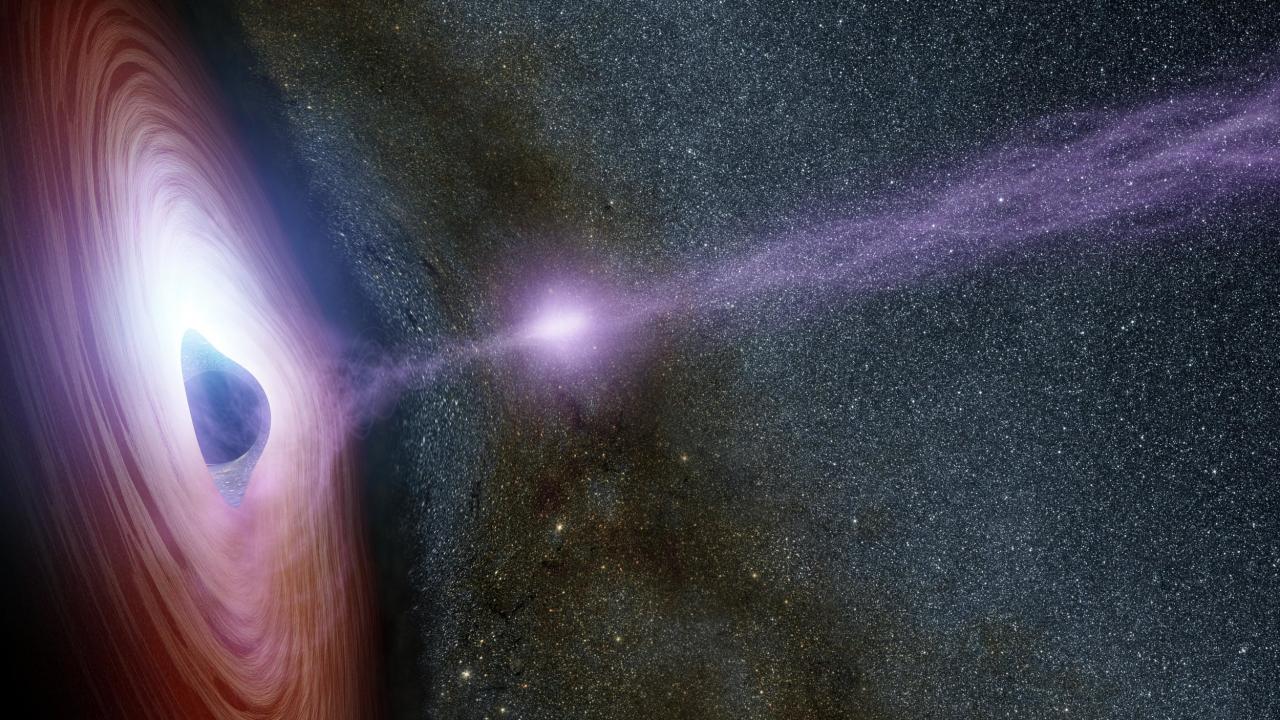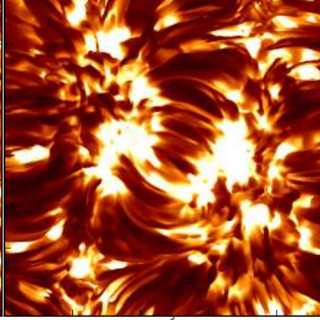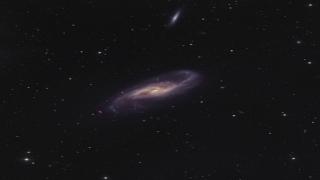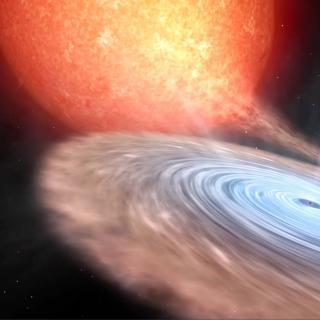General
Active Galactic Nuclei (AGN) are characterized by a strong emission coming from a very compact region (only few pcs) at the galaxy center. Blazars form a class of AGN, characterized by high luminosity in a broad frequency range, from radiofrequencies to high energies (X-rays and γ-rays), as well as extreme variability and high polarization at optical and near-infrared and radio wavelengths. The broad-band spectral energy distribution shows two bumps: the low-frequency one, from radio to optical/Xrays; and the high-frequency one, from X-rays to γ-rays. The most accepted scenario to explain the observed properties suggests that the emission is coming from a jet of accelerated relativistic particles, closely aligned with the line of sight and originating at the proximity of a supermassive black hole. In this way, the jet emission is strongly amplified and it exceeds any other kind of radiation coming from the galaxy. Synchrotron emission explains the low-frequency bump, whereas leptonic and hadronic models are competing to describe the high-energy bump.
Nowadays, a respectable number of blazers is being monitored daily by the high-energy space observatories, Fermi and AGILE. Blazers also dominate the Universe in the very high energy gamma-ray band (E>100 GeV), which observations are carried out from the ground using Cherenkov telescopes. Hence follow-up programs to simultaneously cover a broad frequency range are mandatory in order to learn more about the unpredictable flux variability observed in ths type of active nuclei and furthermore to try understanding in more detail the physical processes taking place.
In this project two aspects will be covered: on one side, follow-up observations in the optical and near-infrared ranges will be provided, using the telescopes available at the Teide and Roque de Los Muchachos observatories. These observations are carried out within the framework of a more extense collaboration, the GASP-WEBT, which comprises about 30 other observatories. Remarkably, this is the only way to catch and monitor in detail all phases (rising, peak and falling) of correlated flares, which are the test-bed for the theoretical models for high-energy emission; On the other side, long term series of data (several years) taken at different energy ranges will be analized to search for correlations between bands and also any kind of periodicities which may indicate jet-precession, binary black-holes or any other mechanism. Additional insight can be gained by analyzing a number of flares in different targets but, due to the unpredictable nature of such events, this has to be interpreted in statistical terms.
Members
Results
- The host galaxy morphology of the active nucleus Pks 1502+036 is found to correspond to an elliptical (D'Ammando et al 2018). This active nucleus is a powerful gamma ray emitter which implies the presence of a very massive black hole, contrary to the expected from its spectroscopic classification.
- First redshift determination of the very high energy gamma-ray extreme blazar PGC 2402248 from optical spectroscopy obtained using OSIRIS at GTC (Becerra et al, 2018, ATel 11621). This blazar has been previously detected by MAGIC at very high energy (E > 100GeV).
- The analysis of the light curves in the optical range of two blazars reveals a periodic behaviour with cadence of few years.



